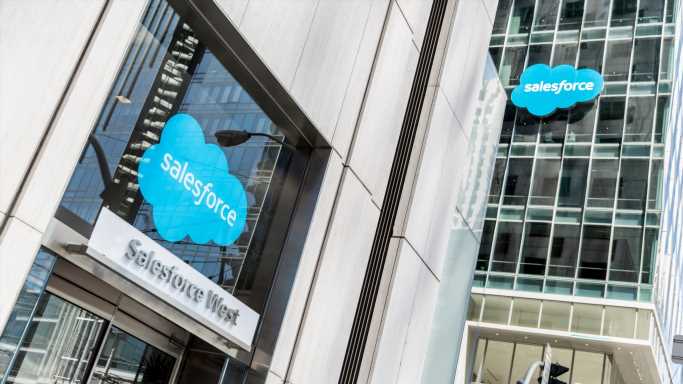Here’s How Much You’d Have If You Invested $1,000 in Salesforce.com a Decade Ago
How much a stock’s price changes over time is important for most investors since price performance can both impact your investment portfolio and help you compare investment results across sectors and industries.
Another factor that can influence investors is FOMO, or the fear of missing out, especially with tech giants and popular consumer-facing stocks.
What if you’d invested in Salesforce.com (CRM) ten years ago? It may not have been easy to hold on to CRM for all that time, but if you did, how much would your investment be worth today?
Salesforce.com’s Business In-Depth
With that in mind, let’s take a look at Salesforce.com’s main business drivers.
Headquartered in San Francisco, Salesforce, Inc., founded in 1999, is the leading provider of on-demand Customer Relationship Management (CRM) software, which enables organizations to better manage critical operations, such as sales force automation, customer service and support, marketing automation, document management, analytics, and custom application development.
Salesforce is currently the largest CRM vendor in the world, with a market share of nearly 20%, according to reports from Gartner, a global research and advisory firm. Its nearest rival, SAP, is way behind at a market share of around 8%. About 90% of the Fortune 100 companies use at least one Salesforce software.
The company has leveraged its expertise in on-demand software to increase the scale of operations. It also offers a technology platform for customers and developers to build and run business applications.
Salesforce helps companies of every size and industry to connect with their customers in new ways through existing and emerging technologies, including cloud, mobile, social, IoT, and artificial intelligence (AI).
Rapid digital transformation and the company’s sustained focus on introducing more aligned products as per customer needs are driving its revenues higher. Over the last eight years, Salesforce’s annual revenues have sextuple from $5.4 billion in fiscal 2015 to $31.4 billion in fiscal 2023.
There are two main revenue streams — Subscription and Support and Professional Services & Other.
Subscription revenues comprise subscription fees from customers, accessing the company’s enterprise cloud computing services (Cloud Services), software licenses, and subscription fees recognized from customers for additional support beyond the standard support lent by the company. This segment accounted for more than 93% of Salesforce’s fiscal 2023 revenues.
Professional Services & Other revenues consist of fees that the company derives from consulting and implementation services and training. This segment accounted for the remaining 7% of Salesforce’s fiscal 2023 revenues.
Bottom Line
Anyone can invest, but building a successful investment portfolio takes a combination of a few things: research, patience, and a little bit of risk. So, if you had invested in Salesforce.com a decade ago, you’re probably feeling pretty good about your investment today.
According to our calculations, a $1000 investment made in July 2013 would be worth $5,326.83, or a 432.68% gain, as of July 12, 2023. Investors should keep in mind that this return excludes dividends but includes price appreciation.
Compare this to the S&P 500’s rally of 165.03% and gold’s return of 44.57% over the same time frame.
Looking ahead, analysts are expecting more upside for CRM.
Salesforce is benefiting from a robust demand environment as customers are undergoing a major digital transformation. The rapid adoption of its cloud-based solutions is driving demand for its products. Its sustained focus on introducing more aligned products as per customer needs is driving its top line. Continued deal wins in the international market is another growth driver. The acquisition of Slack would position the company to be a leader in enterprise team collaboration solution space and better compete with Microsoft’s Teams product. Our estimates suggest that Salesforce revenues will grow at a CAGR of 10.5% through fiscal 2024-2026. However, stiff competition and unfavorable currency fluctuations are concerns. Besides, a challenging macroeconomic environment might hurt its growth prospects in the near term.
The stock has jumped 5.83% over the past four weeks. Additionally, no earnings estimate has gone lower in the past two months, compared to 19 higher, for fiscal 2023; the consensus estimate has moved up as well.
This Little-Known Semiconductor Stock Could Be Your Portfolio’s Hedge Against Inflation
Everyone uses semiconductors. But only a small number of people know what they are and what they do. If you use a smartphone, computer, microwave, digital camera or refrigerator (and that’s just the tip of the iceberg), you have a need for semiconductors. That’s why their importance can’t be overstated and their disruption in the supply chain has such a global effect. But every cloud has a silver lining. Shockwaves to the international supply chain from the global pandemic have unearthed a tremendous opportunity for investors. And today, Zacks’ leading stock strategist is revealing the one semiconductor stock that stands to gain the most in a new FREE report. It’s yours at no cost and with no obligation.
Yes, I Want to Help Protect My Portfolio Against Inflation >>
Want the latest recommendations from Zacks Investment Research? Today, you can download 7 Best Stocks for the Next 30 Days. Click to get this free report
Salesforce Inc. (CRM): Free Stock Analysis Report
To read this article on Zacks.com click here.
Sponsored: Find a Qualified Financial Advisor
Finding a qualified financial advisor doesn’t have to be hard. SmartAsset’s free tool matches you with up to 3 fiduciary financial advisors in your area in 5 minutes. Each advisor has been vetted by SmartAsset and is held to a fiduciary standard to act in your best interests. If you’re ready to be matched with local advisors that can help you achieve your financial goals, get started now.
Source: Read Full Article

